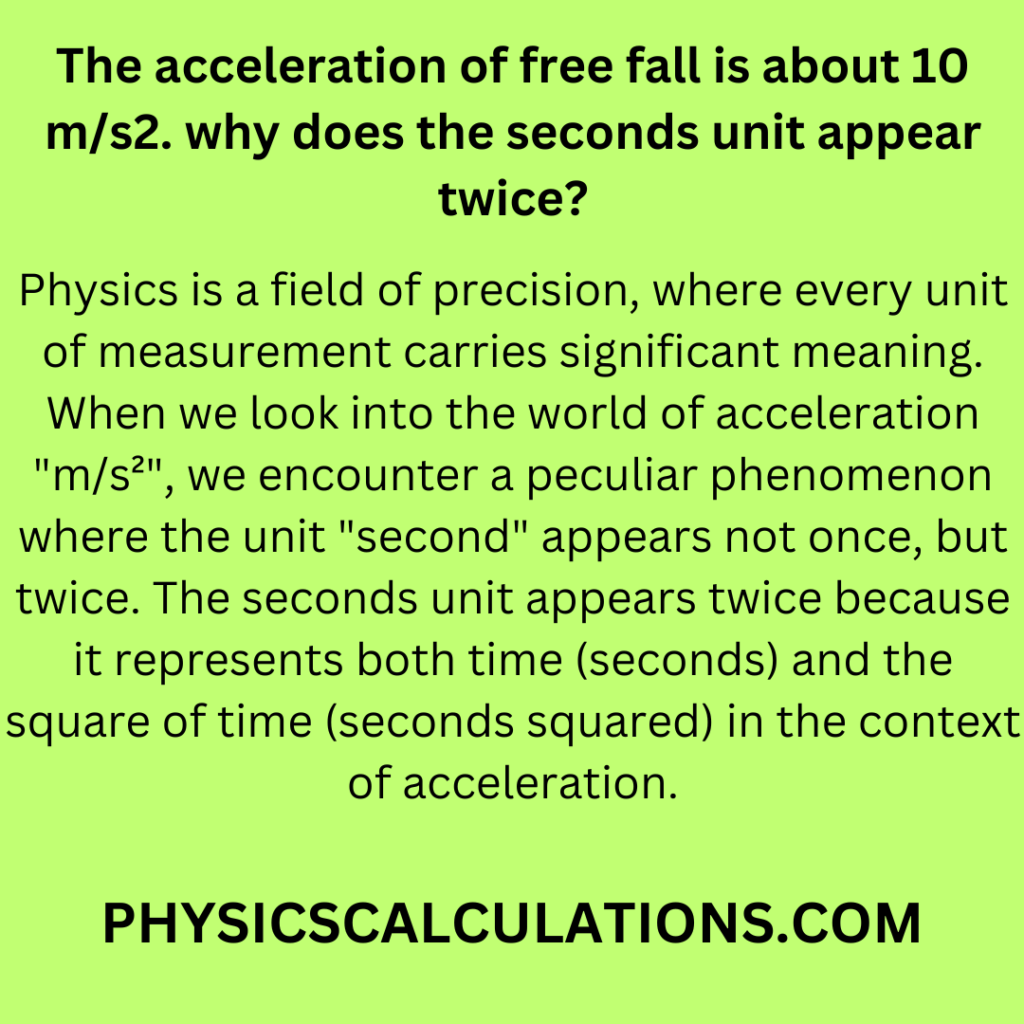Defining Free Fall Acceleration:
Before we tackle the peculiar unit, we will need to clarify what free fall acceleration is. Free fall acceleration is the rate at which an object accelerates when subjected to the force of gravity alone, under the condition of negligible air resistance. It’s a fundamental concept in physics and plays a very important role in helping us to understand the motion of objects near the surface of the Earth.
Physics is a field of precision, where every unit of measurement carries significant meaning. When we look into the world of acceleration “m/s²”, we encounter a peculiar phenomenon where the unit “second” appears not once, but twice. The seconds unit appears twice because it represents both time (seconds) and the square of time (seconds squared) in the context of acceleration.

Understanding Units in Physics:
In physics, units are aspects of measurement. They provide context and convey the scale of quantities. The use of units enables us to perform calculations and make sense of the physical world.
When we talk about acceleration, the standard unit of measurement is meters per second squared (m/s²). This unit tells us how much an object’s velocity changes over time.
Breaking Down the Units:
Now, let us dissect the term “m/s².” It consists of two components:
- Meters per Second (m/s): This part of the unit represents the change in velocity over time. In simpler terms, it tells us how many meters an object would travel per second if it maintained the same acceleration. It measures speed or velocity.
- Per Second (1/s): This component represents time. It tells us that the change in velocity occurs within one second. Time is a fundamental dimension in physics and is often included in units to specify the rate of change.
The Redundancy Explained:
The apparent redundancy in the term “m/s²” is a consequence of the fact that acceleration is fundamentally a change in velocity over time. When we talk about acceleration in everyday language, we often refer to how quickly an object’s speed is changing. The term “m/s²” elegantly encapsulates both the change in velocity (m/s) and the time frame (per second).
Therefore, by expressing acceleration as “m/s²,” we convey the idea that an object is changing its speed by a certain number of meters per second every second. It’s a concise and precise way of describing the phenomenon without the need for additional units.
Practical Significance:
The use of “m/s²” as the unit for acceleration simplifies calculations and makes it easier to communicate the concept. It is a reminder that acceleration is not just about the final velocity but also about the rate at which that velocity changes.
In the context of free fall, where objects experience a constant acceleration due to gravity, the redundancy in “m/s²” becomes particularly relevant. It emphasizes that gravity causes objects to change their velocity by approximately 10 meters per second for every second they are in free fall. It’s a practical and intuitive way to describe the phenomenon.
Summary: The acceleration of free fall is about 10 m/s2. why does the seconds unit appear twice?
The redundancy in the term “m/s²” in acceleration units is not a mistake but rather a concise and meaningful representation of how velocity changes over time. It’s a reminder that acceleration is not just about speed but also about the rate of change in speed. In the context of free fall, where gravity exerts a constant force, this unit elegantly captures the essence of how objects accelerate toward the Earth.